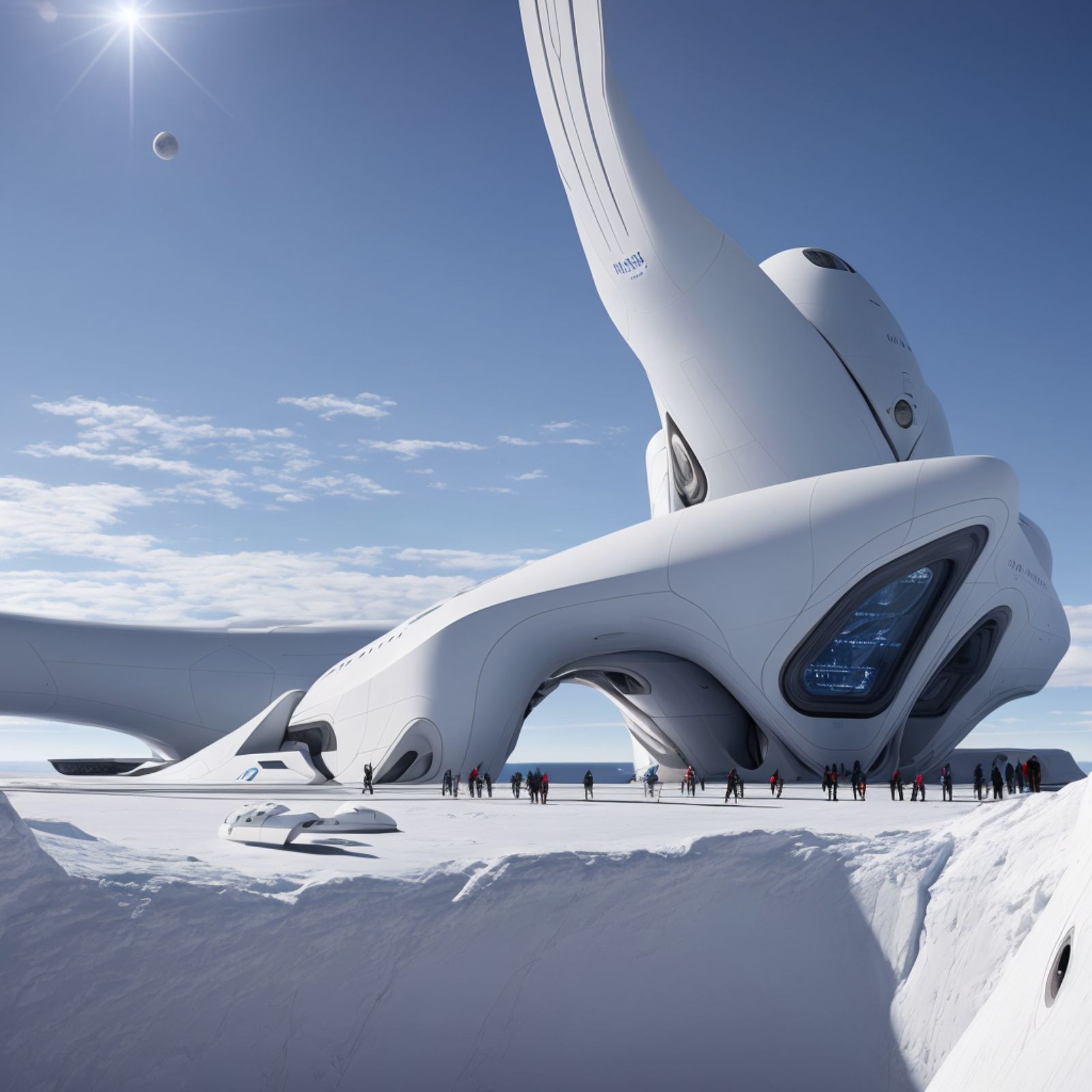The Antarctic continent, frequently regarded as Earth’s final frontier, harbours an abundance of untold narratives awaiting exploration. In alignment with the mystique of this remote environment, the avant-garde project ‘Living in the Clouds’ employs Artificial intelligence to foster the creation of new landscapes.
Using AI in our design process can help us step out from linear design based on our previous experiences and tap into the new possibilities of design. Stable Diffusion text-to-image and image-to-image algorithms have emerged as revolutionary tools in computational design, offering unprecedented flexibility and control over design iterations.

When blended with the transformative capabilities of Control Net and specific control types like depth maps or segmentation control types, the algorithm serves as a potent framework for architectural exploration. This article discusses the nuances of deploying Stable Diffusion with Control Net in the conceptualisation and realisation of ‘Living in the Clouds’, an architectural project deeply inspired by the natural environment of Antarctica.
Methodology
Lenka Petrakova embarked upon an exploratory journey employing Stable Diffusion in conjunction with Control Net. The objective was twofold:

• To leverage the inspirational prowess of Stable Diffusion while exerting control over geometric forms through the integration of modelled 3D objects.
• Fine-tune control parameters such as depth mask weight to balance creative freedom and design exactness.
Greater Control over Design Iterations
Preliminary tests with Stable Diffusion and Control Net revealed the algorithm’s efficacy in facilitating geometry adaptations. This allowed the generated designs to align more congruously with architectural intentions, turning an abstract concept into a feasible blueprint.

By incorporating control types like depth maps and segmentation, the Stable Diffusion workflow accommodated design iterations that could potentially echo Antarctica’s untamed terrains and inexplicable beauty.
Bridging the Gap between Creative Freedom and Design Precision
One of the challenges in computational design is achieving a harmony between creativity and precision. The research found that fine-tuning control parameters, particularly depth mask weight, allowed the algorithm to bridge this gap successfully.

As a result, the designs generated showed an engaging interplay between artistic license and geometric rigour, thus contributing to developing an architectural vocabulary uniquely suited to the Antarctic landscape.
Conclusion
The ‘Living in the Clouds’ project, driven by Stable Diffusion and Control Net, opens a new chapter in the untold stories of Antarctica. Through meticulous testing and design iterations, Lenka Petrakova has showcased how computational design strategies can unveil a novel architectural narrative deeply rooted in the natural inspiration that Antarctica offers. Source by Lenka Petrakova.

